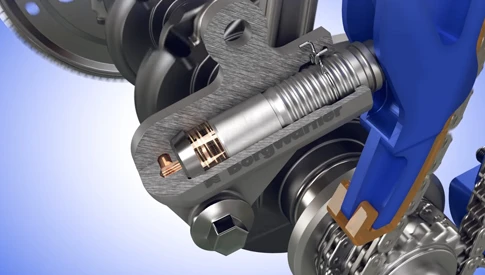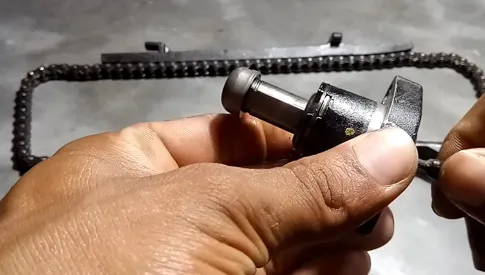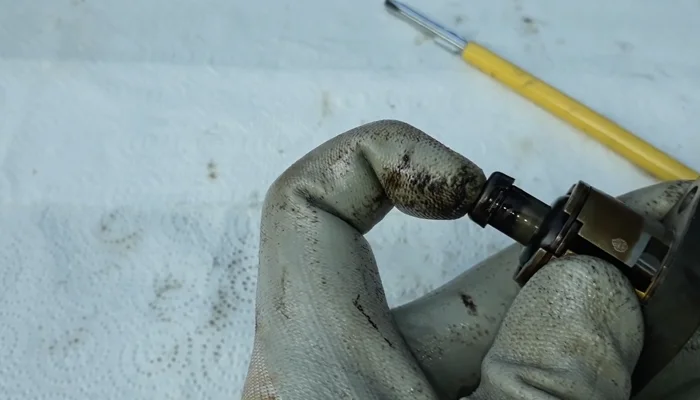Timing chain tensioners play an important role in the overall function of an engine. When they are not functioning properly, it can cause a variety of problems that will lead to decreased performance and even engine failure. In this article, we will discuss the basics of how to adjust timing chain tensioner.
What is the Timing Chain Tensioner?
The timing chain tensioner is a vital component in the engine that keeps the timing chain tight so that the pistons and valves can operate correctly. The timing chain connects the crankshaft to the camshaft sprocket, and if it becomes loose, it can cause the engine to misfire or “skip.”
How to Adjust Timing Chain Tensioner: Top Tips

Before driving a vehicle, it is important to adjust the timing chain tension properly. Failing to do so can cause engine damage and decreased performance. Here are a few tips to help you get the job done right:
Use the Manufacturer’s Specifications
Timing chain tensioners should be adjusted according to the manufacturer’s specifications. This will ensure that the tensioner is set correctly and will prevent engine damage.
Check the Tensioner Regularly
Regularly checking your tensioner is necessary to make sure it is working properly. If it is not, it can cause the timing chain to become loose and damage the engine.
Use a Proper Socket
When adjusting the tensioner, make sure to use a proper socket that will fit the bolt snugly. This will help to ensure that the tensioner is adjusted correctly.
Loosen the Bolt before Adjusting
Before adjusting the tensioner, make sure the bolt holding it in place is loosened This will make it easier to adjust the tensioner and will prevent damage to the bolt.
Keep the Engine Cool
Make sure the engine is cool before adjusting the timing chain tensioner. This will help to prevent damage to the engine.
Use a Jackstand
Use a jackstand to hold the car in place while you adjust the tensioner. This will prevent the vehicle from moving and will allow you to work safely.
Be Patient and Take Your Time
Adjusting the timing chain tensioner can be a difficult task. When doing this, you need to be patient and take your time. This will help to ensure that the job is done correctly.
Check the Tensioner after Adjustment
After adjusting the tensioner, in order to ensure that it is working properly, it is important to check it. This will help ensure that the engine is running correctly and prevent engine damage.
The Benefits of Adjusting Timing Chain Tensioner

There are many benefits to properly adjusting the timing chain tensioner. These benefits include:
Increased Engine Performance
One of the main benefits of adjusting the timing chain tensioner is increased engine performance. With the proper tension, the timing chain will not skip, which can lead to engine damage.
Improved Fuel Economy
Another benefit of adjusting the timing chain tensioner is improved fuel economy. When the timing chain is tight, it will not cause the engine to misfire, which can lead to decreased fuel economy.
Prevent Engine Damage
One of the most important benefits of adjusting the timing chain tensioner is that it can help to prevent engine damage. When the timing chain becomes loose, it can cause the engine to skip and damage the pistons and valves.
Peace of Mind
When the timing chain tensioner is properly adjusted, it can give you peace of mind knowing that your engine is running correctly. This can save you from costly engine repairs down the road.
Ensure Correct Valve Operation

Timing chain tensioner adjustment is also beneficial for ensuring proper valve operation. When the timing chain is loose, it can cause the valves to misfire, which can lead to engine damage.
Decreased Emissions
Adjusting the timing chain tensioner can also help reduce emissions. When the timing chain is tight, it will not cause the engine to misfire, which can lead to increased emissions.
Improved Engine Life
One final benefit of adjusting the timing chain tensioner is that it can improve engine life. When the timing chain is loose, it can cause the engine to skip and damage the pistons and valves. By properly adjusting the tensioner, you can help to prevent this from happening.
Frequently Asked Questions
What Does a Chain Tensioner do on a Motorcycle?

A chain tensioner is a device that is used to keep the timing chain tight. It is important to properly adjust the tensioner regularly to ensure that it is functioning properly. If it is not, it can cause the timing chain to become loose and damage the engine.
How Often Should You Adjust Your Chain Tensioner?
It is important to adjust the chain tensioner on a regular basis. How often you need to do it will depend on how often you ride your motorcycle. It is generally recommended that you adjust it every 5,000 miles.
How Can You Tell If your Chain Tensioner Needs Adjusting?
If the chain tensioner is not functioning properly, you will likely notice decreased engine performance and decreased fuel economy. You may also hear a rattling noise coming from the engine. If you experience any of these symptoms, it is important to adjust the tensioner as soon as possible.
Can I do it Myself?
Yes, you can do it yourself. However, it is important to be very careful while doing it. If you are not comfortable doing it, you can take your motorcycle to a mechanic.
What Are the Consequences of Not Adjusting My Chain Tensioner?
If the chain tensioner is not properly adjusted, it can cause the engine to misfire and damage the pistons and valves. This can lead to decreased engine performance and decreased fuel economy. Additionally, it can also cause increased emissions. In extreme cases, it can even cause the engine to seize up.
Final Words
Properly adjusting the chain tensioner will ensure that your engine runs smoothly and without damage. If you are unsure how often you should be adjusting it, consult with a professional or check your owner’s manual for instructions on when it needs to be done.

